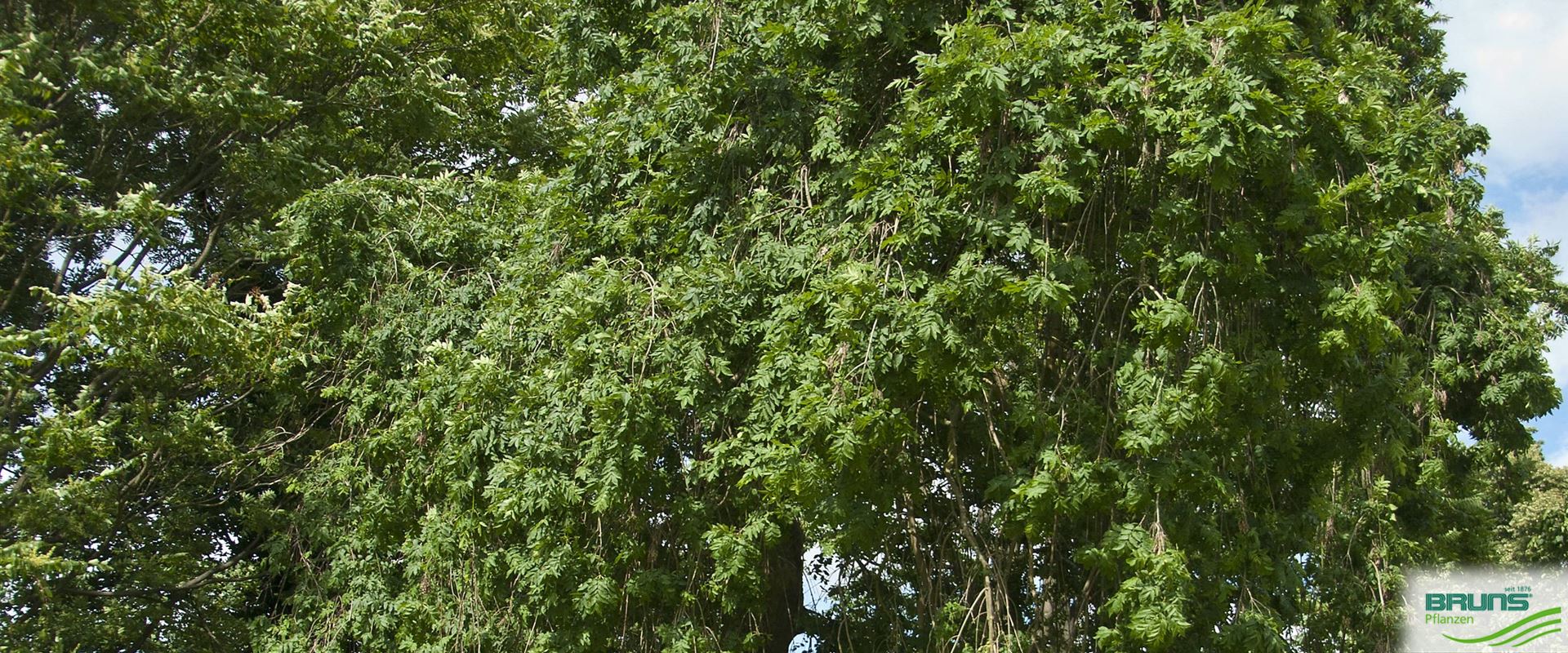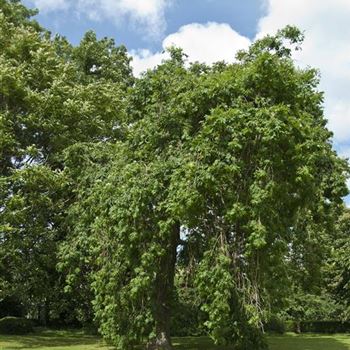Additive
Found in England in 1838.
Distribution
Europe, Asia Minor to Transcaucasia and northern Persia; all over Central Europe, especially in the western and southern parts, in the Alps up to 1400 m; in wet woodlands and in gorge woodlands, in deciduous mixed woodlands with a herbaceous layer, along streams and rivers, on stony slopes, on moist, open, deep to occasionally shallow, nutrient-rich, calcareous to mildly acid, loam or clay soils.
Habit
Medium-sized tree, branches and branchlets widely arched, vertically hanging, cascade-like, crown becoming umbrella-shaped with age.
Size
10 to 12 (up to 15) m in height and 8 to 10 m in spread, when mature of same spread as height. Annual growth is 20 cm in height and 15 to 20 cm spread.
Bark
Olive-green to grey-green, later grey, remaining smooth into maturity. Black winter buds.
Leaves
Deciduous, opposite, imparipinnate, 30 to 40 cm long, 9 to 13 leaflets, oval, deep veins, sawn margins, matt green. Autumn colour is occasionally yellow, but green leaves often fall after the first frost.
Flowers
Appearing before the leaves, in axillary, 10 cm long panicles, yellow to reddish-green, inconspicuous, hermaphrodite or monoecious, wind pollination, April to May.
Fruits
Winged nuts, narrow and long, held in clusters, ripening in September/ October and often remaining on the tree until spring. The winged nuts rotate around their own axis in free fall, moving in a corkscrew-like fashion, flies up to 150 m.
Roots
Tap root during the first ten years, later with a very strong, shallow system that spreads far beyond the crown diameter, board like main root system, on the underside with vertically growing roots down to 1.5 m. Largest root spread of all the native trees. Roots grow only from May to beginning of September. Sensitive to lowering of the ground water table, withstands limited covering of the root area. Often has a huge mass of roots.
Site
Sun, light shade to partial shade.
Soil
Prefers humus and nutrient-rich, sufficiently moist, deep and open soils, chalk loving, but will thrive on moderately acid sites. Fails on compacted and dry soils, intolerant of water-logged sites, prefers flowing water with a high oxygen content.
Characteristics
Tree for partial shade, shade tolerant when young, somewhat warmth loving, young trees are susceptible to damage by late frosts, wind resistant, regenerates well from basal wood following hard pruning, reacts to lowering of the water table with crown die-back, reaches the age of 200 years. Flower heads are often infested by mites, gall causes malformed, woody flower heads which remain on the tree during winter. Subject to browsing by life-stock and deer. Very sensitive to prolonged exposure to acid smoke and gases in industrial areas (EHLERS).
Further
Further characteristics as for the species.





 German
German  French
French  English
English  Russian
Russian